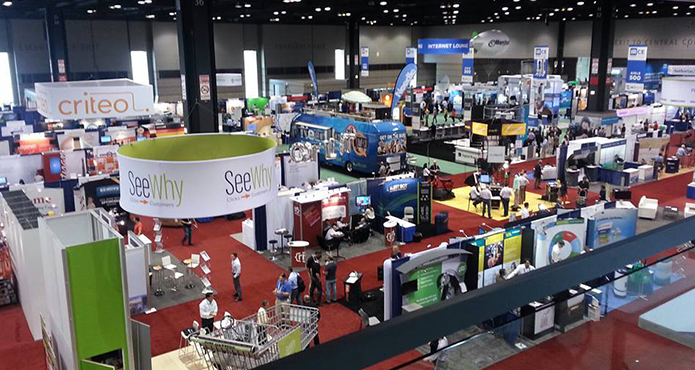The world of eCommerce is constantly evolving, and businesses are seeking innovative ways to enhance their online presence and deliver exceptional user experiences. Two prominent architectural approaches have emerged in this pursuit: MACH Architecture and Monolithic Architecture. While Monolithic Architecture has long been the traditional choice, MACH Architecture is gaining momentum due to its ability to meet the demands of modern eCommerce. Let us explore the critical differences between the two, highlighting concepts such as Microservices, Agile Development, Scalability, API-First Approach, Headless Commerce, Headless Architecture, and Decoupled Architecture.
Monolithic Architecture
Monolithic Architecture has been the go-to approach for building eCommerce platforms for years. It involves developing a single, tightly-coupled application with interconnected modules and components. In this architecture, any changes or updates to one part of the system often require rebuilding and deploying the entire application. While Monolithic Architecture provides simplicity and ease of development, it needs more regarding scalability, flexibility, and Adaptability.
MACH Architecture
MACH Architecture, on the other hand, takes a different approach by embracing a more modular and decentralized system. It stands for Microservices, API-First, Cloud-Native, and Headless. By breaking down an eCommerce platform into smaller, independent microservices, MACH Architecture enables businesses to achieve agility, scalability, and faster time-to-market. The API-First approach ensures seamless communication between various services, allowing developers to create flexible and customizable experiences.
Microservices and Agile Development: Microservices are at the core of MACH Architecture. They involve breaking down an application into more minor, independent services, each responsible for specific functionality. This modular approach promotes Agile Development, enabling teams to work on individual services simultaneously, resulting in faster development cycles and easier maintenance. Microservices allow businesses to scale specific components without affecting the entire system, making it ideal for handling high traffic volumes during peak seasons.
Scalability and API-First Approach
Scalability is crucial for eCommerce platforms, especially during periods of high demand. MACH Architecture offers inherent scalability as you can scale each microservice independently. Additionally, the API-First approach ensures that every service is exposed via APIs, facilitating seamless integration with third-party services, external applications, and even IoT devices. This interoperability enhances the platform’s capabilities, allowing businesses to leverage various tools and services to deliver exceptional user experiences.
Headless Commerce and Headless Architecture
Headless Commerce is another crucial concept associated with MACH Architecture. It decouples the frontend presentation layer from the backend eCommerce functionalities. This separation allows businesses to deliver personalized and consistent experiences across multiple channels, such as websites, mobile apps, voice assistants, and IoT devices. Headless Architecture provides the flexibility to choose and swap out different frontend frameworks or technologies without disrupting the underlying eCommerce functionality, thereby future-proofing the platform.
Decoupled Architectures
MACH Architecture embraces decoupled architectures, allowing businesses to integrate and manage multiple systems and services without tightly coupling them. This flexibility enables organizations to adopt new technologies, experiment with innovations, and stay ahead of the competition. Decoupled architectures provide the freedom to replace or upgrade individual services without affecting the entire ecosystem, reducing maintenance costs and offering agility in responding to changing market needs.
Which architecture is better for an eCommerce platform?
Determining which architecture is better for an eCommerce platform, whether MACH Architecture or Monolithic Architecture, depends on several factors and the business’s specific needs. Let’s consider some key points to help make an informed decision:
- Scalability: MACH Architecture excels in terms of scalability. By leveraging Microservices, businesses can scale specific components independently, allowing for better handling of high traffic volumes during peak periods. Conversely, monolithic architecture requires scaling the entire application, which can be more challenging and resource-intensive.
- Flexibility and Agility: MACH Architecture promotes flexibility and agility through its modular and decoupled approach. With independent Microservices and an API-First approach, businesses can easily integrate third-party services, experiment with new technologies, and adapt quickly to changing market demands. Monolithic Architecture, in contrast, can be more rigid and challenging to modify or update.
- Maintenance and Deployment: Monolithic Architecture offers simplicity in development and deployment. With all components tightly coupled, it is relatively straightforward to maintain and deploy the entire application as a single unit. However, this simplicity can become a limitation when making changes or updates, as even minor modifications may require rebuilding and redeploying the entire system. MACH Architecture’s modular structure allows for easier maintenance and deployment of individual Microservices.
- Future-proofing and Innovation: MACH Architecture, focusing on Headless Commerce and Headless Architecture, enables businesses to future-proof their platforms. Decoupling the frontend presentation layer allows for seamless integration with new technologies and channels, facilitating innovative user experiences. While stable and reliable, Monolithic architecture may need help to keep pace with rapidly evolving technologies and consumer expectations.
Ultimately, the choice between MACH Architecture and Monolithic Architecture depends on the specific needs and goals of the eCommerce platform. MACH Architecture offers greater scalability, flexibility, and adaptability, making it suitable for businesses prioritizing agility and innovation. Monolithic Architecture may be ideal for smaller-scale platforms or those requiring simplicity and straightforward maintenance. It is essential to carefully evaluate the requirements and long-term objectives of the eCommerce platform before making a decision.
Conclusion
In conclusion, regarding eCommerce, MACH Architecture represents a significant shift from traditional Monolithic Architecture. While Monolithic Architecture has been reliable, MACH Architecture offers a more modular, scalable, and flexible approach. With its focus on Microservices, Agile Development, Scalability, API-First Approach, Headless Commerce, Headless Architecture, and Decoupled Architecture, MACH Architecture empowers businesses to adapt quickly to market demands, deliver personalized experiences, and integrate seamlessly with various technologies and platforms. By embracing MACH Architecture, eCommerce companies can gain a competitive edge, enhance user experiences, and future-proof their venues in an ever-evolving digital landscape. It is a revolution that is transforming the eCommerce industry for the better.


